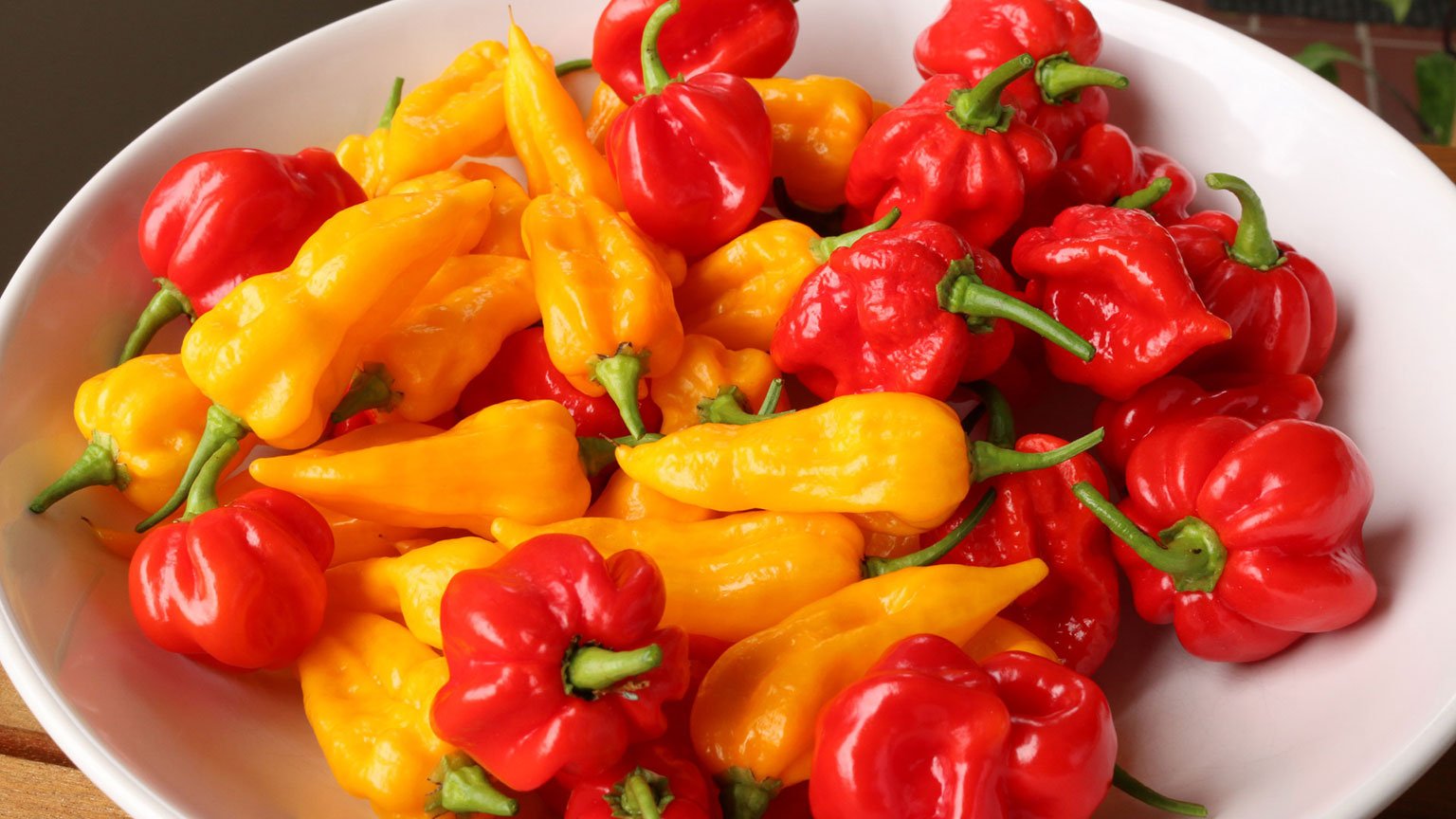Hot and Spicy Food

Today, January 16, is International Hot and Spicy Food Day, an appealing prospect for those of us in the Northern Hemisphere who are currently battling the bitter winter weather or a stuffy nose. Just the thought of spice conjures up warm and sunny locales, dishes that make us sweat, and tropical beverages that help us put out the fire on our tongues.
What gives spicy food its heat and why are some spicy foods hotter than others? Is spicy food good for you, or is it a health hazard? Or a little of both?
To answer the first question, most spicy foods contain a common element: the chili pepper, which is native to northeastern Mexico and has been in existence since at least 7,500 BC. One of the very first Europeans to encounter it was none other than Christopher Columbus (imagine his shock when he sampled one!), and it was he who gave the pepper its name, from the genus Piper, from whence also comes black pepper.
If you want to know the relative “hotness” of chili peppers, you can check where they fall on the Scoville scale, a system of measurement devised by Connecticut pharmacist Wilbur Scoville in 1912 to determine a pepper’s relative “spiciness” or “pungency,” based on the concentration of capsaicinoids in its ribs and seeds. The number of “Scoville Heat Units” (SHU) a pepper rates will help you to decide whether you should avoid, eat at your own risk, proceed with caution, or consume with abandon:
- Pepper spray (definitely in the “avoid” category, unless you enjoy emergency rooms) is rated at more than 2 million SHU, and can burn through fabric, not to mention your internal organs.
- Next on the list, in the “eat at your own risk” category, is the ghost pepper, or extract of the Indian bhut jolokia plant, at 855,000 SHU (a man interviewed by The New Yorker likened it to “molten lava, burning needles…the tip of my tongue being branded by a fine point of heated steel”). Sounds fun, doesn’t it?
- Next are the Habanero and Scotch Bonnet peppers, each at 100,000 SHU. Proceed with caution.
- In descending order are the Thai (50,000 SHU) and Cayenne (30,000 SHU) varieties
- And finally, the Tabasco, Jalapeno, and Poblano peppers (all 2,500 SHU and below, or what most of us comfortably consume).
- Bell peppers, if you’re wondering, are zero SHU. So, pile ‘em on! (Or remove the ribs and seeds from the others, which will cut down on the heat quotient considerably.)
You may be surprised to learn that spicy foods, if you can tolerate them, just might prolong your life. They can also help control your appetite and boost your energy level, thereby assisting with weight loss, if that’s your goal. And, contrary to popular belief, spicy foods don’t cause ulcers. They can, however, aggravate conditions you already have, such as dyspepsia, irritable bowel syndrome, or hemorrhoids. Rule of thumb: if it causes you pain, think twice. Words to live by in general, perhaps, except by gastromasochists (see below). Word of warning: if you are dining on foods containing chili peppers – or cooking them – you will definitely want to avoid contact with your eyes. (Trust us.)
Chili peppers have been an important component in recipes in many locales all over the world, particularly in Asian countries where you find them in all kinds of dishes. If you’re not sure you can take the heat, you can try hot sauce – such as sriracha (composed of chili pepper paste, garlic, distilled vinegar, salt, and sugar) – on the side. And if you get in over your head, drink milk – it contains the protein casein, which will help to put out the forest fire in your mouth.
The more spicy food you eat, (and also, perhaps, the longer you eat it) the less sensitive you will be to its effects. Which might explain why some cultures, whose people have been big spicy food consumers from a very early age, perpetuate that tradition. And as with anything extreme, there are some who feel compelled to push the envelope, as a cult of “chili-heads” (the aforementioned gastromasochists, who tend to be men from English-speaking countries, for some reason) take part in a never-ending competition to determine who can find, cultivate, and/or consume the hottest peppers imaginable. Hope they have lots of milk on hand.
For the rest of us, a little chili pepper in moderation can be therapeutic and delicious at the same time, and you’ll find it in Asian, Mexican, and Italian dishes, to name just a few. And good news for the spice-avoidant: only mammals are sensitive to spicy foods, so if you fall outside that category, knock yourself out. But if you’re reading this, it probably doesn’t apply to you. Sorry.





